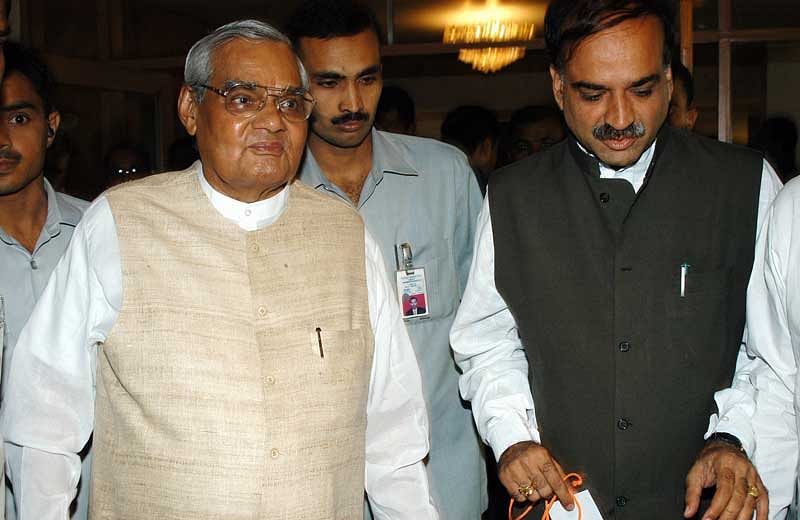
Union Minister H N Ananth Kumar climbed the political ladder in the BJP from the grassroots and nurtured an ambition of becoming Chief Minister of Karnataka, which he almost achieved, if not for circumstances. A six-term MP representing Bengaluru South constituency in the Lok Sabha continuously since 1996, Ananth Kumar never tasted electoral defeat and has the distinction of being the first person to speak in Kannada in the United Nations.
He has the distinction of being the youngest Cabinet minister at the age of 39 in the Atal Bihari Vajyapee cabinet in 1998.
Born in a middle-class Brahmin family on July 22, 1959, in Bengaluru to Girija and Narayan Shastry, Ananth Kumar was inspired by the RSS at a young age. He graduated in the faculty of Arts (BA) from K S Arts College, Hubballi, and went on to complete his LLB. As a student leader, he was a member of Akhila Bharatiya Vidyarthi Parishad and was imprisoned during the Emergency.
He was elected as the State Secretary of the ABVP and later became its National Secretary in 1985. Kumar was well-connected in the party and was close to the top brass in the central leadership. He was once considered the “blue-eyed boy” of former deputy prime minister L K Advani. He nurtured his constituency well and could identify with most of the party workers by their first names.
Kumar had good friends in other parties too and this is said to be one of the reasons for his electoral success. He became the president of the state unit of the BJP in 2003 and led the party to emerge as the single largest party in the Legislative Assembly elections the next year.
Relationship with BSY
Kumar nurtured the ambition of becoming chief minister, which led to him cross swords with senior leader B S Yeddyurappa on several occasions. In fact, the Ananth Kumar – Yeddyurappa rivalry was legendary in the BJP.
At one point, the central leadership is said to have told Ananth Kumar to confine himself to national politics and not interfere in the affairs of the state unit of the party. The rivalry is said to be one of the reasons for Yeddyurappa to quit the BJP to form the KJP in 2013. However, when Yeddyurappa returned to the BJP, ahead of Lok Sabha polls, Kumar warmly welcomed him back.
Kumar came close to become the chief minister in 2011 after Yeddyurappa resigned from the post following his name figuring in the Lokayukta report on illegal mining. According to party functionaries, Kumar succeeded in getting his name cleared for the post by the party central leadership. However, senior leaders, including Yeddyurappa, Jagadish Shettar and K S Eshwarappa, are said to have teamed up and succeeded in installing dark horse D V Sadananda Gowda to the top post.
Kumar handled various portfolios in the Union Cabinet, including civil aviation, tourism, sports and youth affairs, culture, urban development and poverty alleviation. In May 2014, he was appointed chemicals and fertilizers minister and later in July 2016 was given the parliamentary affairs portfolio by Prime Minister Narendra Modi. As party national general-secretary, he contributed to strengthening the party's presence in Madhya Pradesh, Bihar and Chhattisgarh.
He played a key role in getting the international airport to Bengaluru. It was during his recent tenure as union cabinet minister that neem-coated urea was launched which succeeded in stopping of diversion of subsidised urea meant for agriculture to industry. Kumar is also credited for opening ‘Jan Aushadhi Kendras’ with a focus on affordable healthcare for all. He was also closely associated with the Adamya Chetana Foundation, run by his wife Tejaswini, and involved in supporting lesser privileged children.